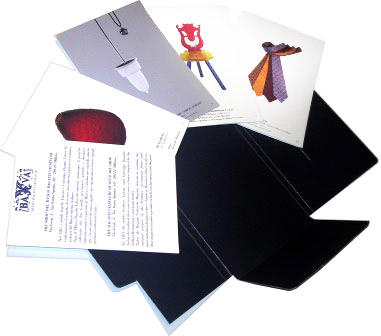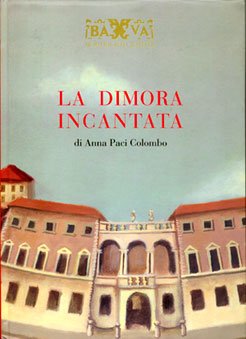|
2. MERCHANDISING Rosanna Pavoni contacted some designers, stylists and production companies at home and abroad to launch an innovative merchandising project; not so much a commercial expedient as an integral part of the museum’s identity. The idea was to continue the artistic project at the heart of the creation of the House and the Bagatti Valsecchi collections: just as the Bagatti Valsecchi brothers were inspired by the Renaissance to create their mansion, without copying any model in particular, so modern designers were asked to take their inspiration from the Bagatti Valsecchi as an artistic whole in order to design new objects. The Museum art shop catalogue was thus enriched , starting from the inauguration of the Museum in 1994, with products that are never mere copies of the objects exhibited in the Museum, but free re-workings inspired by the atmosphere, decoration, all the artistic patrimony the visitor can breathe in and observe in the rooms. One example: In 1996 Alessandro Mendini responded to the invitation, taking inspiration from a 16th century stool to create a new chair that exudes an unmistakably personal style mingled with the culture and artistic creativity of the Italian renaissance.  Mendini, Bagatti Valsecchi Museum chair, 1996  Some of the objects created by the international artists and designers invited by Rosanna Pavoni to contribute to the artshop of the museum (Sipek, Sawaya & Moroni, Valentino, Etro, Baleri, Orvola, De Santillana)       3. BAGATTI VALSECCHI SERIES Rosanna Pavoni created and edited the bi-lingual Bagatti Valsecchi Museum “Notes” dealing with topics related to the restoration of the decorative arts and 19th century culture. The brief texts, free from excessive notes, but supplied with a select bibliography, made it possible for a large number of topics to be tackled in the series, using various methods. The result is a new look at specific themes rich in content and meaning, opening up avenues for deeper study, the intended “lightness” of these brief essays stimulating readers to pursue their own interests in more depth.  4. CHILDREN'S PROJECT In 1998 a project began entitled “Children’s Project” with the aim of reaching a very young public. The aim is to familiarise children and adolescents from 5 to 13 with the museum and its patrimony through both family and school. Itineraries have been worked out to suit different age groups in which the play aspect gradually gives way to learning in keeping with the age of the child. In the Museum rooms are placed, beside the files for adults, files specially studied for children and others intended for their parents and adult helpers who can thus lead the younger ones to discover the Museum through the medium of play. For teachers there are folders containing material to work on in class, based on what the children have learnt during the Museum visit and which make it possible to go deeper into themes of varying difficulty, according to the child’s age. The Children’s Project has also been enriched through collaboration with the Pincopallino Company by the short story written by Anna Paci Colombo dedicated to the Casa Bagatti and the two brothers, Fausto and Giuseppe, which has been illustrated by the winner of the competition specially set up in 2000 among the pupils of the Scuola del Libro, Urbino. The co-ordinated image has been added to the logo studied for the Children’s Project.  progetto bambino / 1: logo, 1998  progetto bambino / 2: cut up game 
5. RESEARCH PROJECT: 'A TRIBUTE TO ARTS AND CRAFTS' In 1998, for the Bagatti Valsecchi Museum , Rosanna Pavoni launched the project dedicated to the discovery and appreciation of Lombard craftsmanship.
|




